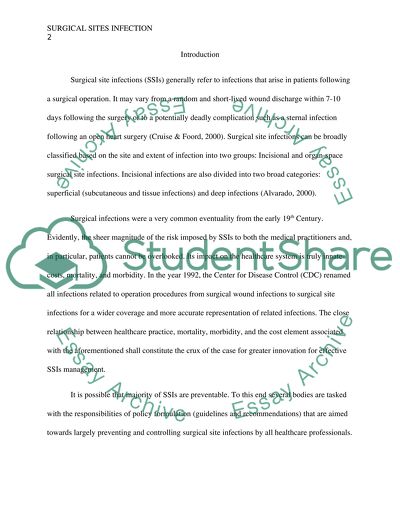Surgical Sites Infection Research Paper Example | Topics and Well Written Essays - 1000 words. Retrieved from https://studentshare.org/nursing/1443153-surgical-site-infection-post-op-patient
Surgical Sites Infection Research Paper Example | Topics and Well Written Essays - 1000 Words. https://studentshare.org/nursing/1443153-surgical-site-infection-post-op-patient.


